Themed collection Energy Frontiers: Hydrogen

Dos and don’ts in screening water splitting electrocatalysts
A perspective with an explicit account of the appropriate screening of water splitting electrocatalysts advocating dos and don’ts!
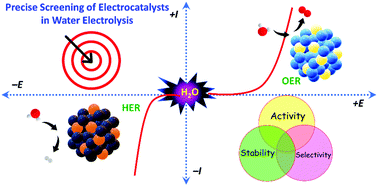
Energy Adv., 2022,1, 511-523
https://doi.org/10.1039/D2YA00076H
Perspective on the hydrogen economy as a pathway to reach net-zero CO2 emissions in Europe
The envisioned role of hydrogen in the energy transition – or the concept of a hydrogen economy – has varied through the years.

Energy Environ. Sci., 2022,15, 1034-1077
https://doi.org/10.1039/D1EE02118D
Facilitating green ammonia manufacture under milder conditions: what do heterogeneous catalyst formulations have to offer?
The transition to green ammonia is necessary, but conventional catalysts perform poorly under ‘green’ reaction conditions. We provide a perspective on the recent progress in developing more efficient catalysts for lower temperatures and pressures.

Chem. Sci., 2022,13, 890-908
https://doi.org/10.1039/D1SC04734E
On the climate impacts of blue hydrogen production
Natural gas based hydrogen production with carbon capture and storage is referred to as blue hydrogen.
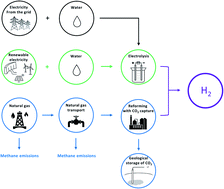
Sustainable Energy Fuels, 2022,6, 66-75
https://doi.org/10.1039/D1SE01508G
Seawater electrolysis for hydrogen production: a solution looking for a problem?
This study assesses research and development needs for direct seawater electrolysis from energy, cost and environmental aspects and presents a forward-looking perspective on future R&D priorities in desalination and electrolysis technologies.
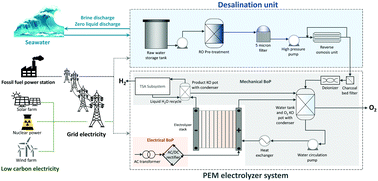
Energy Environ. Sci., 2021,14, 4831-4839
https://doi.org/10.1039/D1EE00870F
Durability of anion exchange membrane water electrolyzers
Understanding the durability-limiting factors of anion exchange membrane water electrolyzers operating under pure water-, KOH- and K2CO3-fed conditions.

Energy Environ. Sci., 2021,14, 3393-3419
https://doi.org/10.1039/D0EE04086J
Enabling large-scale hydrogen storage in porous media – the scientific challenges
This article identifies and discusses the scientific challenges of hydrogen storage in porous media for safe and efficient large-scale energy storage to enable a global hydrogen economy.
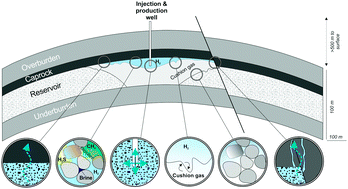
Energy Environ. Sci., 2021,14, 853-864
https://doi.org/10.1039/D0EE03536J
Recent progress with electrocatalysts for urea electrolysis in alkaline media for energy-saving hydrogen production
Urea electrolysis is a promising energy-saving avenue for hydrogen production owing to the low cell voltage, wastewater remediation and abundant electrocatalysts.

Catal. Sci. Technol., 2020,10, 1567-1581
https://doi.org/10.1039/C9CY02618E
Two-dimensional materials for photoelectrochemical water splitting
This review summarizes the superiorities and utilizations of 2D materials for photoelectrochemical water splitting including transition metal dichalcogenides, graphene, graphdiyne, black phosphorus, layered double hydroxides, g-C3N4, and MXenes.

Energy Adv., 2023,2, 34-53
https://doi.org/10.1039/D2YA00231K
A critical review of technologies, costs, and projects for production of carbon-neutral liquid e-fuels from hydrogen and captured CO2
Hydrogen (H2) production along with CCUS (carbon capture, utilization, and storage) are two key areas for transition to net-zero emission. Carbon-neutral liquid e-fuels produced from H2 and captured CO2 are practical alternatives to fossil fuels.
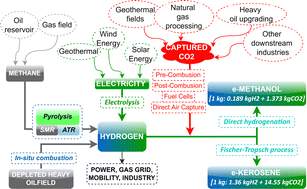
Energy Adv., 2022,1, 580-605
https://doi.org/10.1039/D2YA00173J
Hydrogen liquefaction: a review of the fundamental physics, engineering practice and future opportunities
Hydrogen is emerging as one of the most promising energy carriers for a decarbonised global energy system.
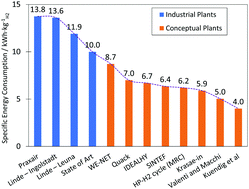
Energy Environ. Sci., 2022,15, 2690-2731
https://doi.org/10.1039/D2EE00099G
Water electrolysis: from textbook knowledge to the latest scientific strategies and industrial developments
Replacing fossil fuels with energy sources and carriers that are sustainable, environmentally benign, and affordable is amongst the most pressing challenges for future socio-economic development.
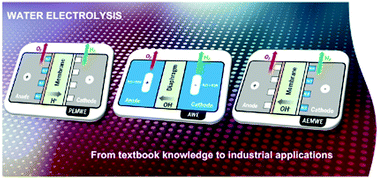
Chem. Soc. Rev., 2022,51, 4583-4762
https://doi.org/10.1039/D0CS01079K
Recent developments of nanocatalyzed liquid-phase hydrogen generation
Nanocomposite catalysts have dramatically improved hydrogen generation from several hydrogen-rich sources in the liquid phase toward the transport of this green fuel.
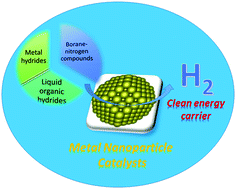
Chem. Soc. Rev., 2021,50, 3437-3484
https://doi.org/10.1039/D0CS00515K
Recent advances in transition-metal-sulfide-based bifunctional electrocatalysts for overall water splitting
This review summarizes recent advances relating to transition metal sulfide (TMS)-based bifunctional electrocatalysts, providing guidelines for the design and fabrication of TMS-based catalysts for practical application in water electrolysis.
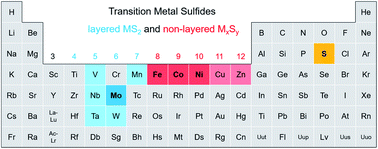
J. Mater. Chem. A, 2021,9, 5320-5363
https://doi.org/10.1039/D0TA12152E
Green hydrogen from anion exchange membrane water electrolysis: a review of recent developments in critical materials and operating conditions
Hydrogen production using water electrolysers equipped with an anion exchange membrane, a pure water feed and cheap components (catalysts and bipolar plates) can challenge proton exchange membrane electrolysis systems as the state of the art.
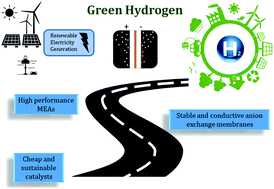
Sustainable Energy Fuels, 2020,4, 2114-2133
https://doi.org/10.1039/C9SE01240K
A review on fundamentals for designing oxygen evolution electrocatalysts
The fundamentals related to the oxygen evolution reaction and catalyst design are summarized and discussed.
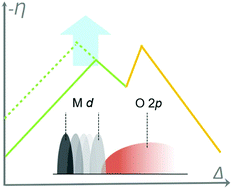
Chem. Soc. Rev., 2020,49, 2196-2214
https://doi.org/10.1039/C9CS00607A
Metal-free photocatalysts for hydrogen evolution
This article provides a comprehensive review of the latest progress, challenges and recommended future research related to metal-free photocatalysts for hydrogen production via water-splitting.
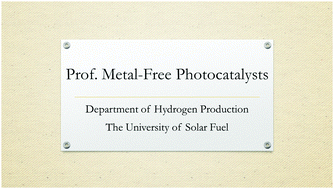
Chem. Soc. Rev., 2020,49, 1887-1931
https://doi.org/10.1039/C9CS00313D
Catalytic self-transfer hydrogenolysis of lignin with endogenous hydrogen: road to the carbon-neutral future
This review describes recently developed self-transfer hydrogenolysis for the lignin depolymerization using itself as a hydrogen donor and proposes a concept of endogenous hydrogen efficiency to assess the utilization rate of endogenous hydrogen.

Chem. Soc. Rev., 2022,51, 1608-1628
https://doi.org/10.1039/D1CS00908G
Life-cycle greenhouse gas emissions and net energy assessment of large-scale hydrogen production via electrolysis and solar PV
Environmental impacts and net-energy of hydrogen production via solar-electrolysis are highly sensitive to operating constraints and context specific variances.
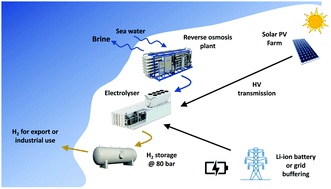
Energy Environ. Sci., 2021,14, 5113-5131
https://doi.org/10.1039/D1EE01288F
Current and future role of Haber–Bosch ammonia in a carbon-free energy landscape
The future of green ammonia as long-term energy storage relies on the replacement of the conventional CO2 intensive methane-fed Haber–Bosch process by distributed and agile ones aligned to the geographically isolated and intermittent renewable energy.

Energy Environ. Sci., 2020,13, 331-344
https://doi.org/10.1039/C9EE02873K
Mn-incorporated nickel selenide: an ultra-active bifunctional electrocatalyst for hydrogen evolution and urea oxidation reactions
One-step electrodeposition strategy is employed to synthesis the Ni–Mn–Se electrocatalyst, exhibiting remarkable hydrogen evolution and urea oxidation reactions catalytic activity and stability at large current densities even superior to platinum.

Chem. Commun., 2022,58, 3545-3548
https://doi.org/10.1039/D1CC07242K
Efficiency gains for thermally coupled solar hydrogen production in extreme cold
We analyse the potential of solar hydrogen production in remote and cold world regions such as Antarctica and quantify the efficiency benefits of thermal coupling.
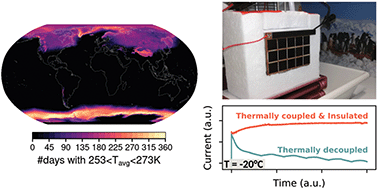
Energy Environ. Sci., 2021,14, 4410-4417
https://doi.org/10.1039/D1EE00650A
Catalytic hydrogenation enabled by ligand-based storage of hydrogen
Using inspiration from biological cofactors, the reversible storage of hydrogen on a supporting dihydrazonopyrrole ligand enables catalytic hydrogenation reactivity with nickel.
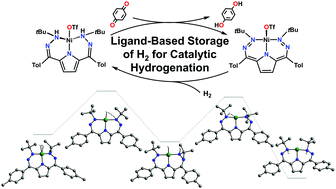
Chem. Commun., 2021,57, 3869-3872
https://doi.org/10.1039/D0CC08236H
Exceptional performance of hierarchical Ni–Fe oxyhydroxide@NiFe alloy nanowire array electrocatalysts for large current density water splitting
Exceptionally high OER & HER performances were achieved by rationally designing the electrode structure of non-noble NiFe materials.
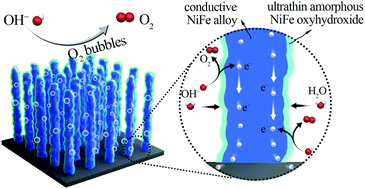
Energy Environ. Sci., 2020,13, 86-95
https://doi.org/10.1039/C9EE02388G
A covalent cobalt diimine-dioxime – fullerene assembly for photoelectrochemical hydrogen production from near-neutral aqueous media
The covalent assembly between a cobalt diimine-dioxime complex and a fullerenic moiety results in enhanced catalytic properties in terms of overpotential requirement for H2 evolution and allows its integration in an operating photocathode.
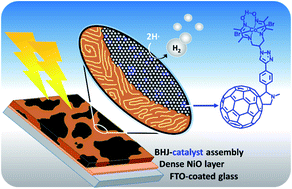
Chem. Sci., 2022,13, 3857-3863
https://doi.org/10.1039/D1SC06335A
On the electronic structure and hydrogen evolution reaction activity of platinum group metal-based high-entropy-alloy nanoparticles
RuRhPdIrPt high-entropy-alloy nanoparticles with a broad and featureless valence band spectrum show high hydrogen evolution reaction activity.
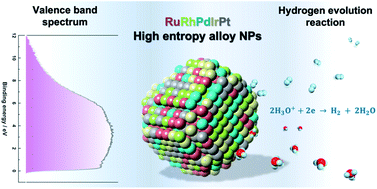
Chem. Sci., 2020,11, 12731-12736
https://doi.org/10.1039/D0SC02351E
Formic acid as H2 storage system: hydrogenation of CO2 and decomposition of formic acid by solid molecular phosphine catalysts
The synthesis and decomposition of formic acid (FA) in aqueous triethylamine (NEt3) with solid molecular phosphine catalysts is demonstrated.
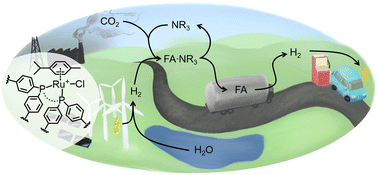
Catal. Sci. Technol., 2022,12, 5649-5656
https://doi.org/10.1039/D2CY00608A
Impact of fuel cells on hydrogen energy pathways in a sustainable energy economy
Key performance characteristics of Proton Exchange Membrane (PEMFC) and Solid Oxide Fuel Cell (SOFC) are compared with emphasis on the sustainability of energy pathways showing that hydrogen for use in PEMFC is best supplied from renewable hydrogen.
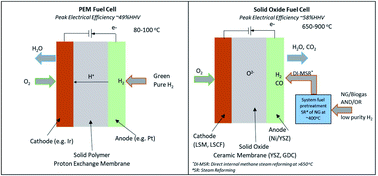
Sustainable Energy Fuels, 2022,6, 4008-4023
https://doi.org/10.1039/D2SE00923D
Enhancing the photocatalytic hydrogen generation performance and strain regulation of the vertical GeI2/C2N van der Waals heterostructure: insights from first-principles study
The band edges of GeI2/C2N vdW are favourable to generate H2 at pH 0 to 9 with transition from a type-II indirect to type-I direct bandgap semiconductor under tensile biaxial strain.

Energy Adv., 2022,1, 146-158
https://doi.org/10.1039/D1YA00047K
An organometal halide perovskite supported Pt single-atom photocatalyst for H2 evolution
An organometal halide perovskite supported Pt single-atom photocatalyst is developed for efficient H2 evolution with a superb STH of 4.50%.
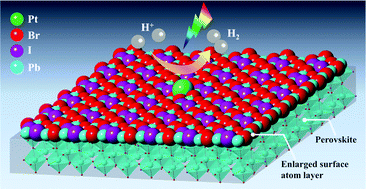
Energy Environ. Sci., 2022,15, 1271-1281
https://doi.org/10.1039/D1EE03679C
Unraveling the dual defect sites in graphite carbon nitride for ultra-high photocatalytic H2O2 evolution
The g-C3N4 with dual defect sites exhibits excellent photocatalytic H2O2 generation activity and selectivity, and the key role of each defect site in the surface reaction mechanism is revealed.
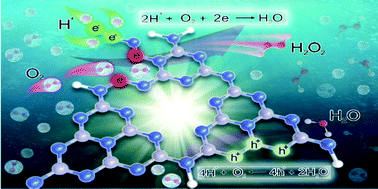
Energy Environ. Sci., 2022,15, 830-842
https://doi.org/10.1039/D1EE02369A
Strain engineering in the oxygen reduction reaction and oxygen evolution reaction catalyzed by Pt-doped Ti2CF2
Strain engineering can regulate the electronic structure of the catalyst and then boosts the catalytic activity of Pt-doped Ti2CF2 (Pt-VF-Ti2CF2).
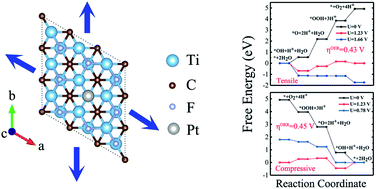
J. Mater. Chem. A, 2022,10, 1390-1401
https://doi.org/10.1039/D1TA07349D
Etching C6CoK3N6-induced ZnCdS for improved hydrogen evolution
The design and construction of advanced functional structures for photocatalysts has been proven to be an extremely effective approach to greatly enhance their properties toward higher solar-driven water splitting efficiency.

Sustainable Energy Fuels, 2022,6, 408-419
https://doi.org/10.1039/D1SE01686E
Constructing CuNi dual active sites on ZnIn2S4 for highly photocatalytic hydrogen evolution
Novel CuNi bimetal-modified ZnIn2S4 photocatalysts with enhanced photocatalytic hydrogen evolution performance have been explored. The possible mechanism of the synergistic effect and spillover effect between Cu and Ni were proposed.

Catal. Sci. Technol., 2021,11, 2753-2761
https://doi.org/10.1039/D0CY02371J
Optimizing accuracy and efficacy in data-driven materials discovery for the solar production of hydrogen
We develop and demonstrate a comprehensive data-driven screening protocol with co-validation between experiment and theory to maximize the success rate of materials discovery for photocatalytic hydrogen generation.
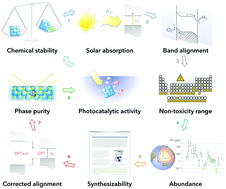
Energy Environ. Sci., 2021,14, 2335-2348
https://doi.org/10.1039/D0EE02984J
Realizing 6.7 wt% reversible storage of hydrogen at ambient temperature with non-confined ultrafine magnesium hydrides
Non-confined MgH2 nanoparticles of 4–5 nm diameter enable reversible storage of hydrogen up to 6.7 wt% at 30 °C.
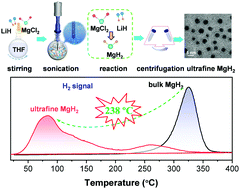
Energy Environ. Sci., 2021,14, 2302-2313
https://doi.org/10.1039/D0EE03160G
Efficient non-metal based conducting polymers for photocatalytic hydrogen production: comparative study between polyaniline, polypyrrole and PEDOT
Incorporation of conducting polymers (CPs) with TiO2 is considered a promising pathway toward the fabrication of highly efficient non-metal based photocatalysts.

RSC Adv., 2021,11, 13229-13244
https://doi.org/10.1039/D1RA01218E
Pyrene-containing conjugated organic microporous polymers for photocatalytic hydrogen evolution from water
Pyrene based conjugated microporous polymers (CMPs) as photocatalysts with promising H2 production efficiencies and very high stability.
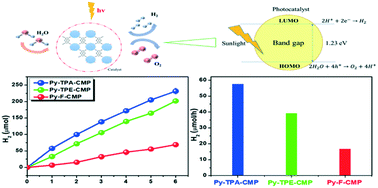
Catal. Sci. Technol., 2021,11, 2229-2241
https://doi.org/10.1039/D0CY02482A
Exfoliated conjugated porous polymer nanosheets for highly efficient photocatalytic hydrogen evolution
A common strategy is developed to exfoliate bulk CPPs into nanosheets for highly efficient PHP performance.

J. Mater. Chem. A, 2021,9, 5787-5795
https://doi.org/10.1039/D0TA11479K
Demonstration of green hydrogen production using solar energy at 28% efficiency and evaluation of its economic viability
The solar to hydrogen (STH) efficiency of photovoltaic-electrolysis (PV-E) setups are a key parameter to lower the cost of green hydrogen produced.
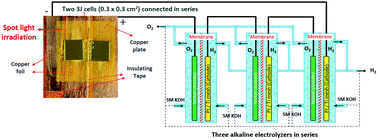
Sustainable Energy Fuels, 2021,5, 1085-1094
https://doi.org/10.1039/D0SE01761B
Improvement of the hydrogen storage characteristics of MgH2 with a flake Ni nano-catalyst composite
The Mg2Ni/Mg2NiH4 formed in the original position in process of hydrogen absorption and dehydrogenation is distributed around Mg/MgH2, which accelerates the rate of hydrogen absorption and dehydrogenation.

Dalton Trans., 2021,50, 1797-1807
https://doi.org/10.1039/D0DT03627G
Li–fluorine codoped electrospun carbon nanofibers for enhanced hydrogen storage
We developed a facile, yet general, approach for preparing Li–fluorine codoped porous carbon nanofiber (Li–F–PCNF) composites, which showed excellent hydrogen storage performance.

RSC Adv., 2021,11, 4053-4061
https://doi.org/10.1039/D0RA06500E
Hydrogen production from natural gas and biomethane with carbon capture and storage – A techno-environmental analysis
We quantify the technical and environmental performance of clean hydrogen production (with CCS) by linking detailed process simulation with LCA.
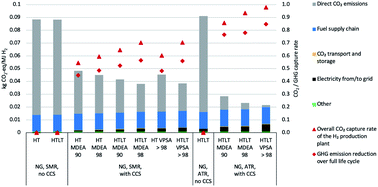
Sustainable Energy Fuels, 2020,4, 2967-2986
https://doi.org/10.1039/D0SE00222D
The HER/OER mechanistic study of an FeCoNi-based electrocatalyst for alkaline water splitting
In operando XAS investigation on FeCoNi-based thin film unravels that Fe3+-assisted water dissociation promotes the formation of Co2+–μ-H–Ni3+ species, and the conductive character of Co2+Ni3+-oxide matrix facilitates the coupling of adjacent [Fe4+![[double bond, length as m-dash]](https://www.rsc.org/images/entities/char_e001.gif) O/Fe3+–O˙] motifs.
O/Fe3+–O˙] motifs.
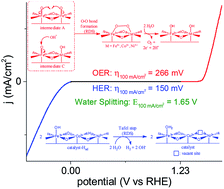
J. Mater. Chem. A, 2020,8, 9939-9950
https://doi.org/10.1039/D0TA01877E
Photocatalytic hydrogen evolution on a high-entropy oxide
A two-phase high-entropy oxide with orange color and good light absorbance is introduced as a photocatalyst for hydrogen production.
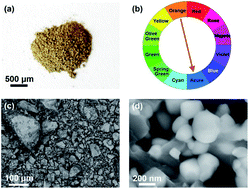
J. Mater. Chem. A, 2020,8, 3814-3821
https://doi.org/10.1039/C9TA12846H
Carbon quantum dots enhanced the activity for the hydrogen evolution reaction in ruthenium-based electrocatalysts
The Ru supported on Porphyra-CQDs exhibited better dispersibility and the highest activity compared with biomass Porphyra and Porphyra activated carbon owing to the strong coordination interactions between Ru and CQDs.
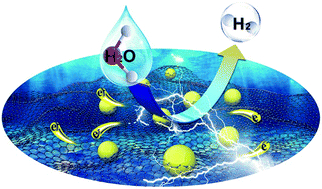
Mater. Chem. Front., 2020,4, 277-284
https://doi.org/10.1039/C9QM00618D
About this collection
It is expected that the use of Hydrogen will contribute significantly to the decarbonisation of the energy sector, and many Hydrogen production routes (like water electrolysis) are renewable and low-carbon. There are many challenges associated with widespread implementation of Hydrogen technologies however, meaning that continued research and innovation into this topic is as important as ever.
This collection showcases some of the latest cutting-edge research on hydrogen technologies for a more sustainable future, including hydrogen production, storage, decarbonisation, scale-up and more. What do you envision to be the next frontier in Hydrogen Energy technologies? If you’re working at the forefront of this research area we welcome you to submit your own hydrogen energy research to our journals.
Join us for our LiveStream session on this topic on 15th November 2022!